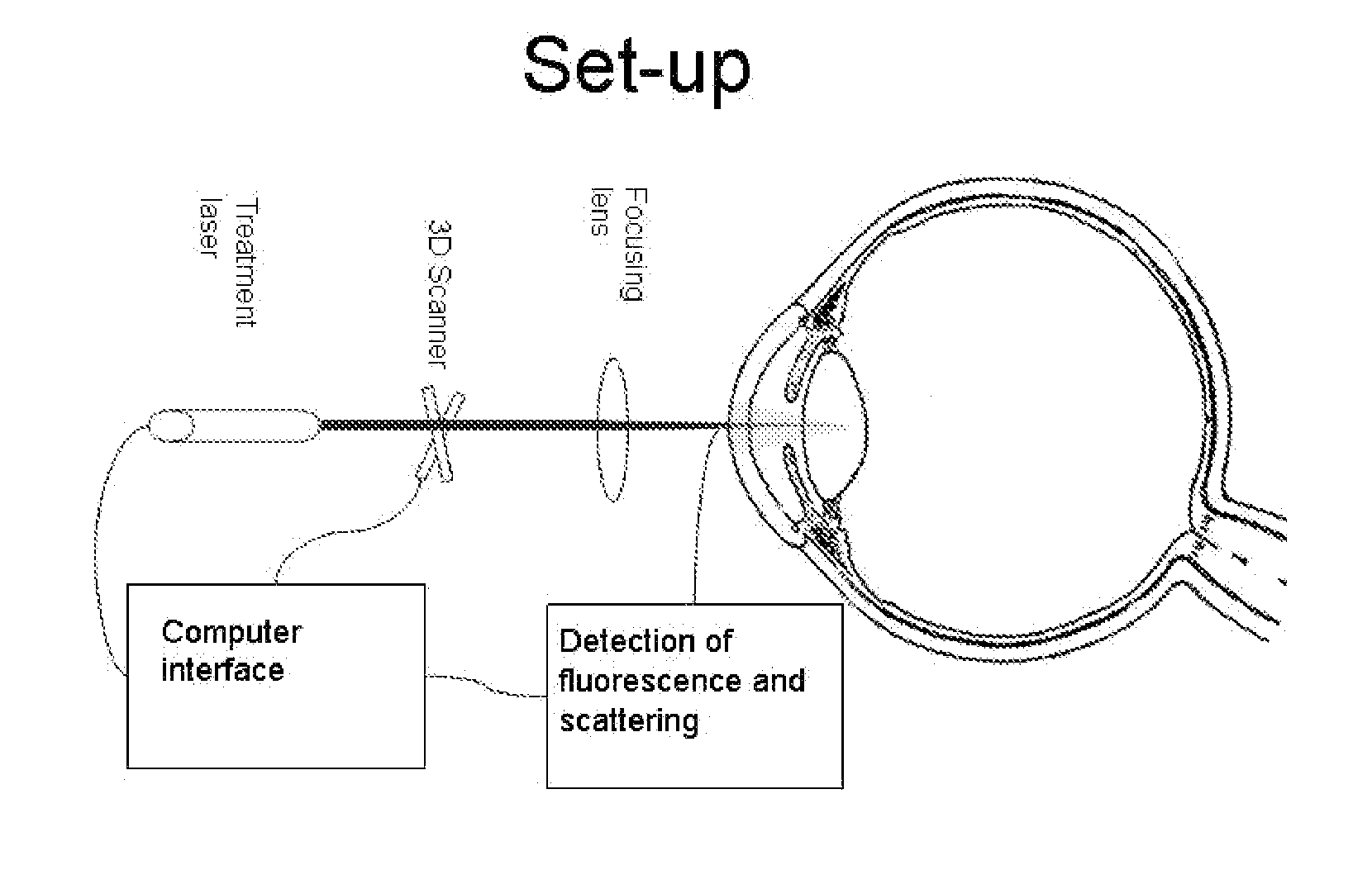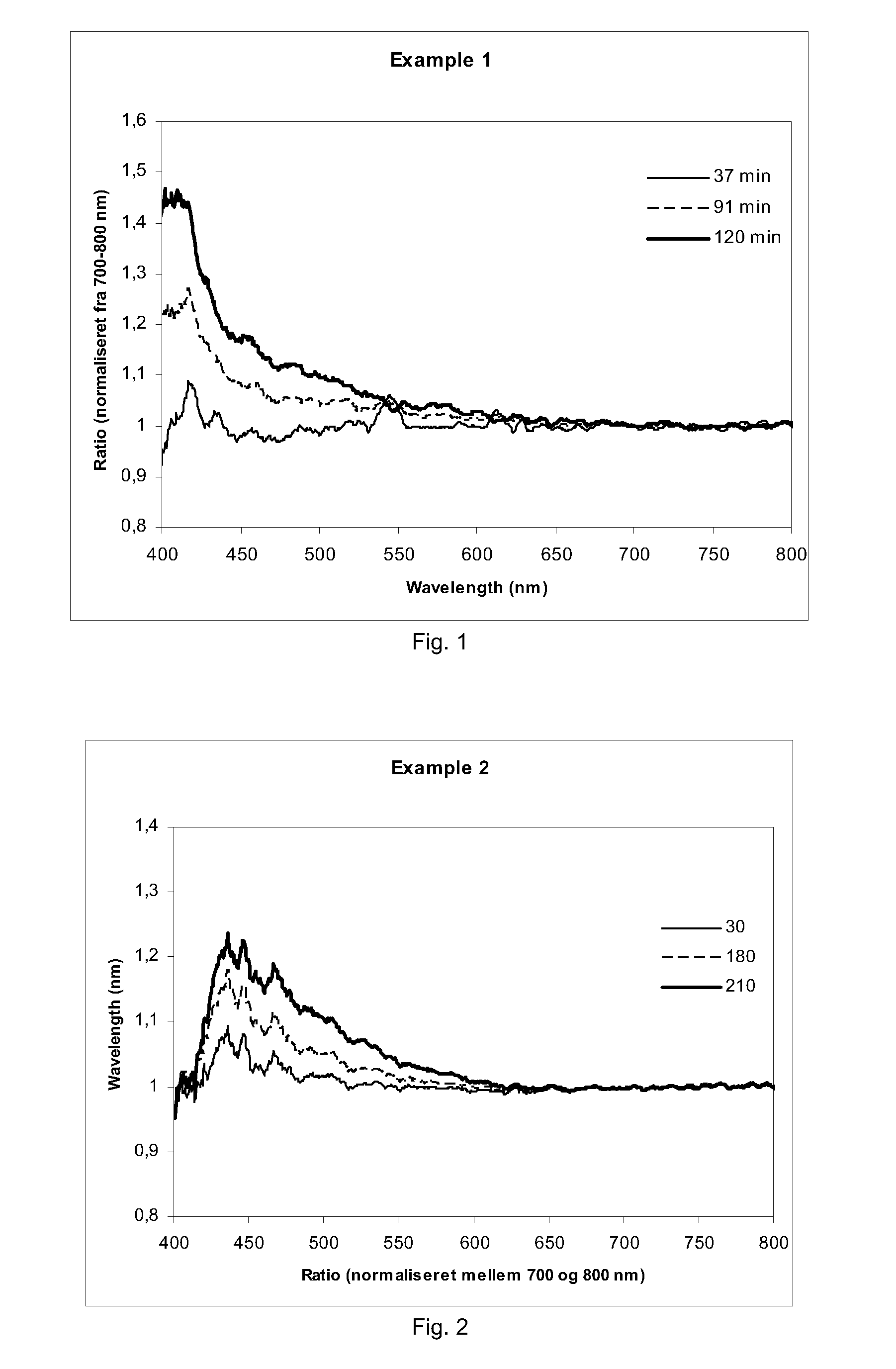System and method for treatment of lens related disorders
a technology for lens and eye disorders, applied in the field of system and method for treating eye disorders, can solve the problems of difficult to change the shape of the lens, many patients find no means, so as to avoid or postpone the need for cataract surgery, delay the onset, and avoid the effect of ons
- Summary
- Abstract
- Description
- Claims
- Application Information
AI Technical Summary
Benefits of technology
Problems solved by technology
Method used
Image
Examples
example 1
Increase in Transmission, Young Lens
[0307]A 51 year old human donor lens was treated with a 405 nm diode cw laser with a power of approximately 40 mW / cm2 for 2 hours, corresponding to a total dose of approximately 280 J / cm2. Transmission spectra were recorded during exposure and showed a 40% increase in transmission compared to the transmission before exposure began (see FIG. 1). The increase in transmission is greatest in the blue-green end of the spectrum.
example 2
Increase in Transmission, Old Lens
[0308]A 74 year old human donor lens was exposed to the same amounts of radiation as in example 1. The increase in transmission was less than in example 1 but the spectral range of the bleaching was much broader (see FIG. 2). This reflects that the lens in example 2 was much older and had a much more densely, colored lens.
example 3
Increased Elasticity
[0309]A human donor lens was exposed to approximately 300 mW / cm2 of 405 nm diode cw laser for 5 hours. FIG. 3 shows the response to centrifugal forces as a ratio of the height of the lens before rotation and with increasing speed of rotation (shown on the x-axis in rounds per minute). The lens of the right eye was kept as a control lens and the left lens from the same donor was treated.
PUM
 Login to View More
Login to View More Abstract
Description
Claims
Application Information
 Login to View More
Login to View More - R&D
- Intellectual Property
- Life Sciences
- Materials
- Tech Scout
- Unparalleled Data Quality
- Higher Quality Content
- 60% Fewer Hallucinations
Browse by: Latest US Patents, China's latest patents, Technical Efficacy Thesaurus, Application Domain, Technology Topic, Popular Technical Reports.
© 2025 PatSnap. All rights reserved.Legal|Privacy policy|Modern Slavery Act Transparency Statement|Sitemap|About US| Contact US: help@patsnap.com



